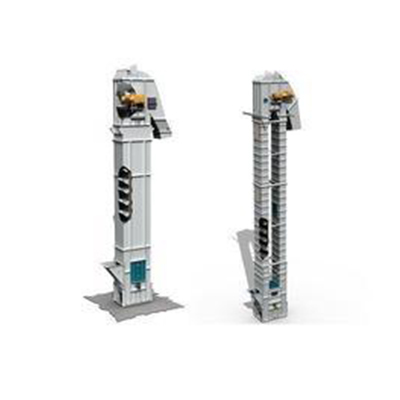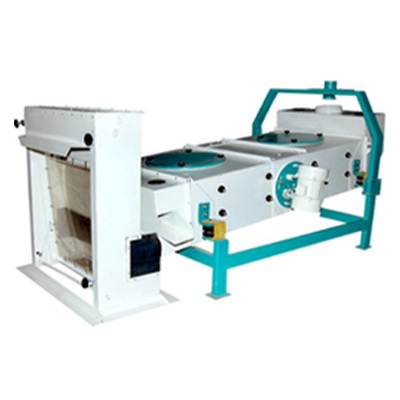Welcome to Bhupati Engineering
Welcome to Bhupati Engineering
Material handling includes a number of operations that can be executed either by hand or by mechanical means or devices to convey material and reduce human drudgery.
The most common types of mechanical devices for grain handling are:
1. Chain Conveyor : Chain conveyor systems are rugged, durable
 conveyors used to transport products along a production line. They are suited to many items that wouldn’t typically convey on a roller conveyor. Therefore, typical uses are to move pallets, racks,
conveyors used to transport products along a production line. They are suited to many items that wouldn’t typically convey on a roller conveyor. Therefore, typical uses are to move pallets, racks,
industrial containers and any products with a sturdy lower surface. Chain conveyor systems can be found in numerous industrial and commercial environments, including warehouses, automotive plants and distribution centers.
A chain conveyor is powered by a continuous chain and they are primarily utilized to transport heavy loads. Our chain conveyor systems are typically a double strand configuration with the load positioned on the chains, however multiple strand configurations are available.
Because chain conveyors are generally very easy to install they usually require minimal maintenance, and integrates easily in systems with CDLR and transfers. Sometimes they are referred to as a pallet conveyor due to their wide use in transporting wood or steel pallets. In addition, multiple chain options allow for flexibility in applications as well as environments.
Ultimation is one of the leading chain conveyor manufacturers and can design and engineer custom conveyors, as well as providing fast-ship “off the shelf” chains conveyor designs.
2. Belt Conveyor: A conveyor belt is the carrying medium of a belt conveyor system. A belt conveyor system is one of many types of conveyor systems. A belt conveyor system consists of two or more pulleys, with an endless loop of carrying medium—the conveyor belt—that rotates about them.
One of the basic tools in material handling industry, belt conveyors are most commonly used in transportation of bulk materials (grain, salt, coal, ore, sand, etc.).
Belt conveyor systems consist of two or more pulleys (a.k.a. drums). An endless loop of carrying medium—the conveyor belt— rotates about them. To move the belt and the material it carries forward, one or both pulleys are powered. The powered pulley is called “drive pulley,” the unpowered one is known as “idler pulley.” Belt conveyors in general material handling such as those moving boxes along inside a facility form a different class of belt conveyors from those that are used to transport large volumes of resources and agricultural materials.
Based on the proposed use, conveyor belts are manufactured using either PVC or rubber.
The belt consists of one or more layers of material. Most belts in general material handling consist of two layers. Carcass is the name of the under layer that provides linear strength and shape, while cover is the name of the over layer. Polyester, nylon and cotton are used most often to create the carcass, while a variety of rubber or plastic compounds specified by use of the belt are used to create the cover.
Belts with regularly spaced partitions are known as elevator belts. They are used to transport loose materials up steep inclines. Belt conveyors are also used in self-unloading bulk freighters and in live-bottom trucks.
3. Vertical Bucket Elevators (VBE) : Bucket elevators serve to vertically transport large masses of bulk material to different heights without creating dust, then dump it. The height to be overcome is frequently more than 200 meters. The weights to be moved are enormous.
• Designed for long rugged service life and gentle handling of the material.
• Heavy duty pillow block head shaft bearing with end caps for dust protection.
• HDPE Buckets (other types optional)
• Self-cleaning V-shaped boot, with sliding tray at the bottom
The carrying elements in bucket elevators are central or double chain strands, link chains, or belts to which the buckets are
 attached. The drive is located at the upper station. The features specified for the drives destined for these applications are similar to those for steeply ascending belt conveyors. Bucket elevators require a comparatively high input power. The drive must be soft-starting because of the high starting power, and this is achieved by means of fluid couplings in the drive train. Bevel helical gear units are normally used for this purpose as single or twin drives on a base frame or swing base.
attached. The drive is located at the upper station. The features specified for the drives destined for these applications are similar to those for steeply ascending belt conveyors. Bucket elevators require a comparatively high input power. The drive must be soft-starting because of the high starting power, and this is achieved by means of fluid couplings in the drive train. Bevel helical gear units are normally used for this purpose as single or twin drives on a base frame or swing base.
As world market leader for bucket elevator drives, FLENDER has standardized the complete application-specific drive system, thus combining the advantages of proven and reliable components with fast availability. FLENDER gear units are a crucial element of the drive train. They are characterized by maximum performance and operational reliability as well as optimal availability. Auxiliary drives (maintenance or load drives) and backstops are supplied as standard. The gear unit and the auxiliary drive are therefore perfectly matched.
Your benefits at a glance
• Maximum power capacity
• Maximum operational reliability
• Fast availability
• Modular design principle
4. Pre-Cleaners : PREMIUM’ PRE - CLEANER is for preliminary cleaning of all kinds of grains in milling plants, brewery and silo system. This machine is suitable for all kind of grains such as sorghum, wheat, Rice, soybean, mustard etc. The powerful
 aspiration system situated at the side of the machine effectively removes light impurity and dust. Further the vibrating sieve removes stones, lumps of clay and other bigger impurities.
aspiration system situated at the side of the machine effectively removes light impurity and dust. Further the vibrating sieve removes stones, lumps of clay and other bigger impurities.
As you enter the world of precleaners you will notice there are a variety of precleaners available and this will help you understand the similarities and differences. To begin with all precleaners have one thing in common. They all use centrifugal force to take dirt particles out of the air intake before it reaches the filter. Exactly how they do this, how well they do it, and what happens to the dirt once it is removed from the air take are some of the things to be considered.
Precleaners can be divided into two major categories. Those that are built into the air cleaner canister and those that are placed on the air intake stack. Within the first category there are two primary types, the finned filter element type and the tube (or cone) type; and within the second are three, the clear plastic collection bowl type, the aspirated typed and the TURBO Precleaner.
How It Works:
The grain cleaner is a combination of robust heavy duty grader and a powerful aspiration system. Material fed at the inlet passes through sieves which remove coarse and fine impurities.
The clean material falls in the post aspiration chamber where the remaining dust particle and light impurities are remove by means of a powerful air current. Finally the clean grain is received at the outlet. The aspiration system comprises blower, Cyclone, Rotary Air Lock Valve and Dust Collector.